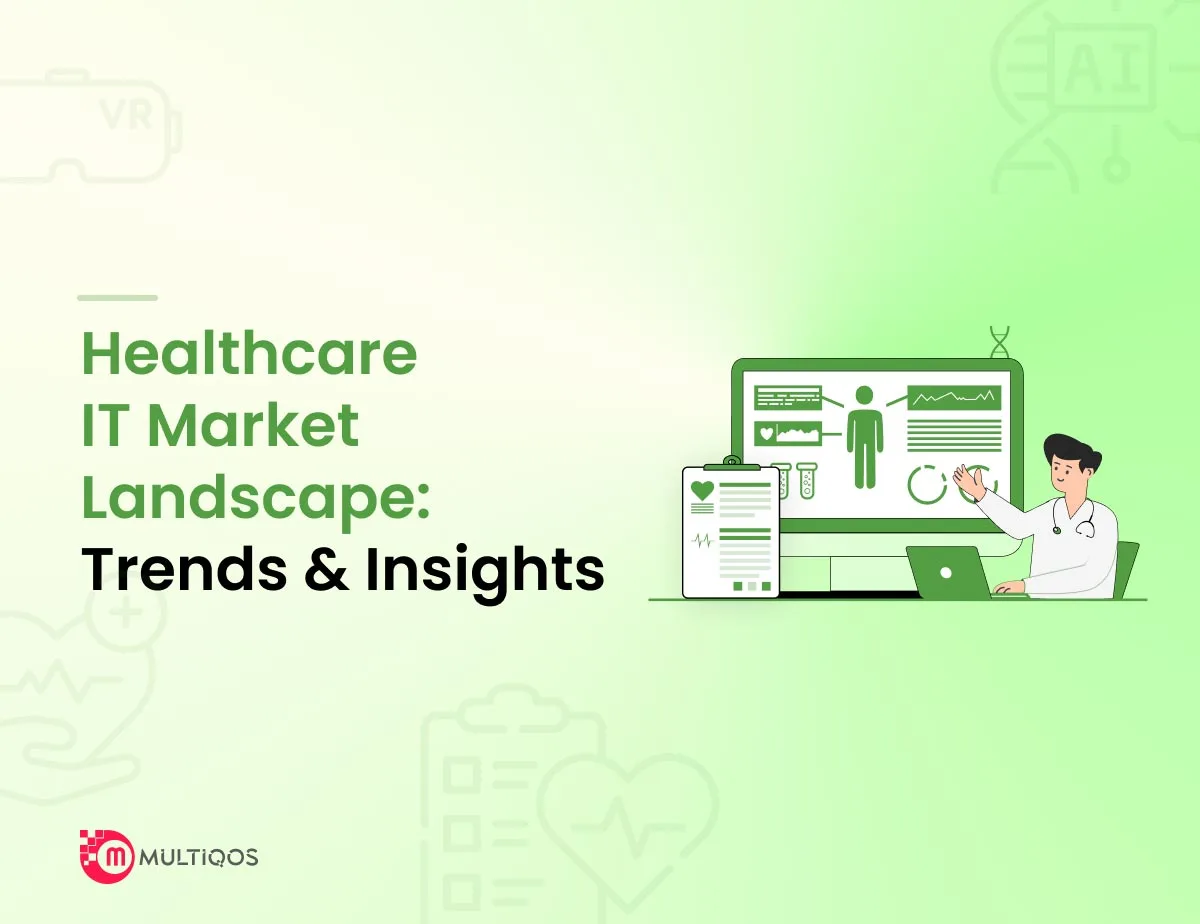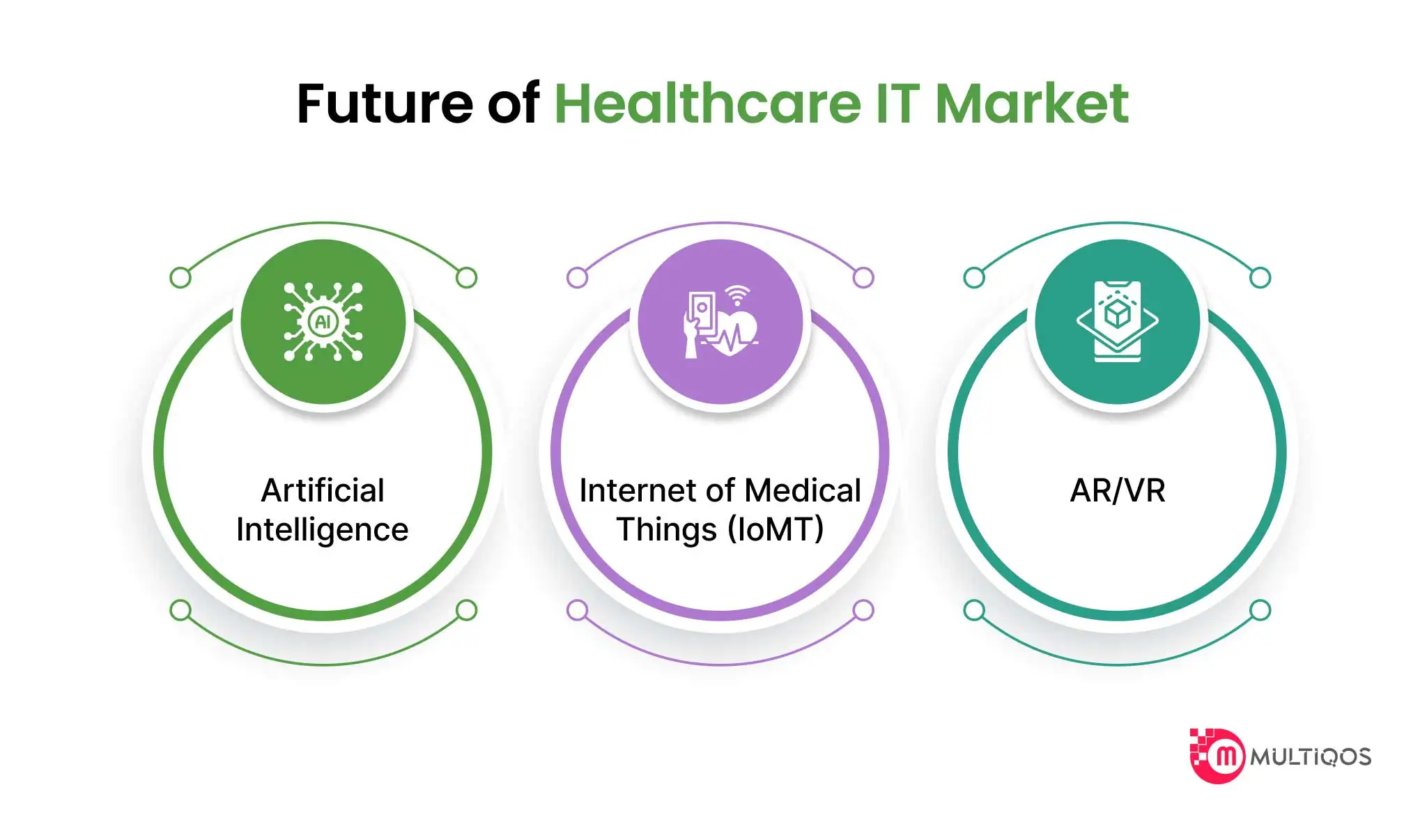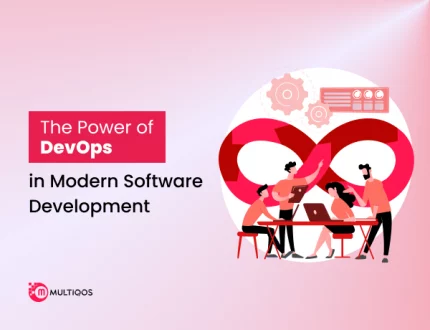Navigating the Healthcare IT Market Landscape: Trends and Insights

Just like many other industries, the advent of IT has had a significant impact on healthcare as well. Indeed, the amalgamation of IT with healthcare gave wonderful results for both healthcare organizations and patients.
Today the healthcare IT market has surpassed all expectations and it’s growing at a rapid pace. Healthcare organizations are continuously adopting digital technologies to avail the benefits of fast and cost-effective processes.
But where is the healthcare IT market heading and what will be its future? Stay connected as we will explore the landscape of this market and try to find out the answers with you. Let’s dive into this article for all this information.
An Overview of the Healthcare IT Market
The size of the global healthcare IT market was $663 billion in 2023 which is going to increase with a CAGR of 15.8% in 2024 and beyond. Multiple factors have contributed to this expansion such as the increase in smartphone usage, the need for remote patient monitoring, increasing investments in eHealth, and more.
One of the notable investments in the market is from Microsoft which invested in a healthcare AI solution. The company collaborated with BeeKeeperAI to allow Azure users to explore the benefits of confidential computing in healthcare AI solutions.
Benefits like cost-effectiveness, efficiency, and ease of use are encouraging hospitals to gradually adopt healthcare IT solutions. Besides, governments are also taking initiatives to promote technologically advanced healthcare solutions.
These initiatives offer secure and accessible digital healthcare systems that allow patients to share, authorize, and store health records. Another significant reason for the growth of the healthcare IT market is the growing penetration of smartphones and the Internet.
The increasing usage of mHealth applications has helped manage chronic diseases and improve overall health facilities. Today around 5.35 billion people have internet access which accounts for 66% of the global population. It has increased the growth prospects for healthcare IT.
The continuous shift towards value-based healthcare in advanced economies like the USA is another growth factor. The widespread adoption of EHR (Electronic Health Records) has accelerated the growth of the healthcare IT market.
There is even a notable investment in this field from Google Health. It collaborated with MEDITECH to combine the power of the search with the EHR platform to help clinicians access information from many sources and offer the best care.
Healthcare IT Market Facts and Statistics
Innovation is key to the advancement of this market. Today, there are various digital healthcare solutions like EHR, EMR, mHealth Apps, Telemedicine apps, and more. These solutions make healthcare services time-efficient and agile.
They also help in improving patient care, minimizing the administrative workload, and reducing costs. In addition to the influx of these solutions, there is more going on in the healthcare IT field. Let’s see more facts and figures below.
- The healthcare IT services market is estimated to be worth $44.09 billion.
- Data privacy and cybersecurity risks are the key challenges in this domain.
- Wireless health and mobile health are likely to be the most important factors in driving the growth of digital health.
- The revenue of online doctor consultations is also increasing and is expected to reach $36 billion by 2026.
- The expansion of the healthcare IT market is also going on due to government regulations favoring the growth of digital health.
- Digital health saw significant growth during the COVID-19 pandemic when were compelled to stay locked in homes. With healthcare IT solutions patients could easily access their reports and other records.
- There was an increase in electronic prescriptions during the first month of the COVID-19 pandemic. During this time, e-prescriptions written via telehealth increased to 72.5%.
- The shortage of skilled IT personnel affects the use and adoption of healthcare IT.
Increasing Dominance of EHR in Healthcare IT
Keeping medical records of patients electronically is cheaper, safer, and convenient than paper-based systems. Therefore, healthcare organizations are upgrading their traditional infrastructure with digital platforms.
The increasing adoption of EHR is a testimony to this fact. They minimize the burden of keeping records of patient’s medical history with more efficient and flexible means. Therefore, the use of EHR is going in the fifth gear. The following are some more facts about EHR.
- The use of EHR or Electronic Health Records has surged in recent years. Around 88% of office-based clinicians are using EHR as of today. They are also referred to as EMR (Electronic Medical Records). They are useful in keeping patient’s medical history in electronic form that can be easily accessed anytime.
- The role of EHR in healthcare IT is becoming influential with the increasing digitalization of medical records. Individuals favor accessing their medical history over a smartphone instead of queuing to get this information on paper.
- EHR/EMR has solved a lot of problems for both hospitals and individuals with seamless management of medical histories. They are a critical part of healthcare IT solutions. Let’s see some quick facts and stats for EHR.
- 9 out of 10 physicians have adopted EHR in the USA. This high adoption rate of EHR showcases the pivotal role of digital health in the country.
Challenges for the Healthcare Information Technology Market
While the healthcare IT market is expanding gradually, some challenges also exist. The following points highlight the key challenges of this market.
Data Security
Storing and managing data electronically provides agility and efficiency, but it could also be risky in the absence of solid security protocols. Data breaches are widespread and the healthcare industry is not spared.
In fact, 1 in 3 Americans was hit by a massive healthcare data breach last year. However, organizations can overcome these challenges by improving their security posture with SSL, encryption, zero-trust architecture, and other measures.
Compliance Issues
Regulatory compliance is an important requirement for healthcare organizations. Healthcare IT involves storing and processing data like medical history, Personally Identifiable Information (PII), and other data.
There are many regulations that ensure data protection in healthcare. For example, HIPAA is a crucial regulation that organizations must adhere to. It provides a standard to protect patient data and prevent it from unauthorized disclosure.
Interoperability Issue
When there are distinct applications and systems in a hospital, there will be an issue of interoperability. As multiple systems are collecting data, it will be difficult to get a holistic view of patients’ health. However, the use of a centralized system and database can solve these problems. It will encourage better coordination among departments and employees.
What the Future Holds for Healthcare IT Market?
New technologies and innovations are adding value to the healthcare information technology market. The future of this market depends on these technologies and innovations. Let’s see some innovations/technologies that will shape healthcare IT.
AI
Artificial Intelligence in healthcare is not a surprise because today this technology is everywhere. AI is an incredible technology and it is quite useful in the health IT sector. Hospitals can integrate AI to leverage automation with human-like analysis of medical records.
AI can be used to present, understand, and analyze complex medical data like a human to draw insights. It can help to improve diagnosis and overall health services. Health-related AI applications involve drug development, patient monitoring, triage and interpretation of X-rays, and more.
By 2030, the size of the healthcare AI market is projected to touch the mark of $188 billion. This technology will have a significant impact on the healthcare industry.
IOMT
The Internet of Medical Things (IOMT) has revolutionized the medical field with smarter ways for healthcare services. It encompasses inter-connected medical devices, hardware infrastructure, and applications.
IOMT enables hospitals and other healthcare organizations to collect medical data without human intervention. It gathers data via interconnected devices and applications. For example, a wearable device can be a part of IOMT that can monitor health and share data related to blood pressure.
The IOMT market is projected to reach around $170 billion by 203o, as per a report by GrandViewResearch. IOMT is a subset of the Internet of Things and is specifically designed to meet the unique needs of the healthcare sector. This is an evolving trend in healthcare IT and will offer immense benefits to the market.
AR/VR
Augmented Reality (AR) and Virtual Reality (VR) are two disruptive technologies that will also redefine the healthcare sector. The demand for AR and VR technology is poised to increase in the future with its incredible applications in the health IT sector.
AR and VR are primarily used for training medical professionals and surgical procedures. But there are other applications of it as well. For example, VR is useful in treating nervous disorders and AR is useful in improving diagnosis.
The share of global AR and VR in the healthcare market is expected to reach nearly $16.4 billion by 2033.
To Wrap Up
The adoption of IT in healthcare is constantly rising and more organizations will join this trend. Investing in IT offers many lucrative benefits that can help your organization get promising returns. Choosing the right software solutions and hardware components is important to establish your IT infrastructure.
Select a healthcare software development company that can fulfill your IT requirements with modern standards. MultiQoS is a trusted partner in the realm of healthcare IT software solutions. We can help you create a wide range of healthcare software solutions including EHR, mHealth apps, telehealth, and more.
FAQ on Healthcare IT Market
It was worth $663 billion in 2023 and projected to grow at a CAGR of 15.8% over 2024-2030.
North America had the lion’s share in the market with 40% share. The growth in this reason is led by the rapid adoption of healthcare IT solutions.
- Phillips Healthcare
- McKesson Corporation
- Athenahealth
- Hewlett Packard Enterprise Development LP
- Veradigm Inc.
Get In Touch







